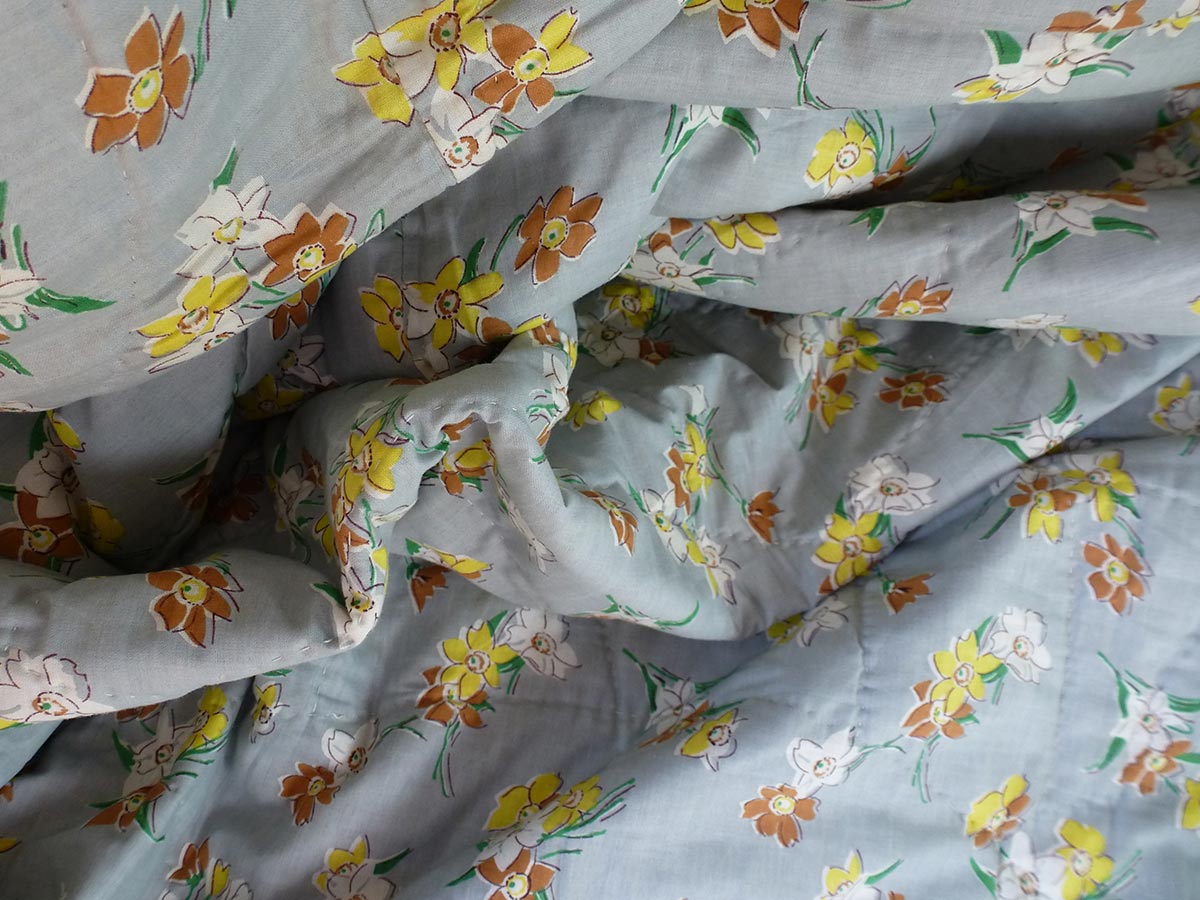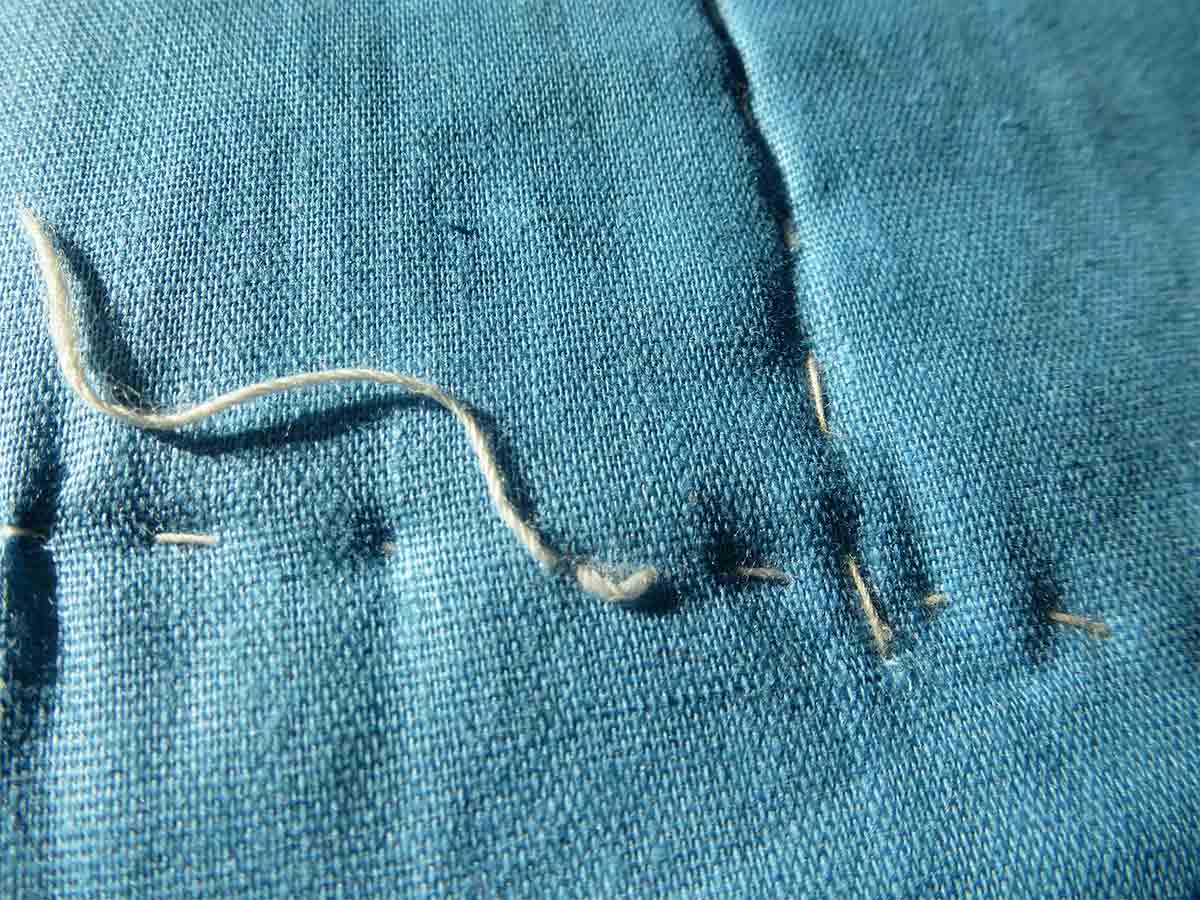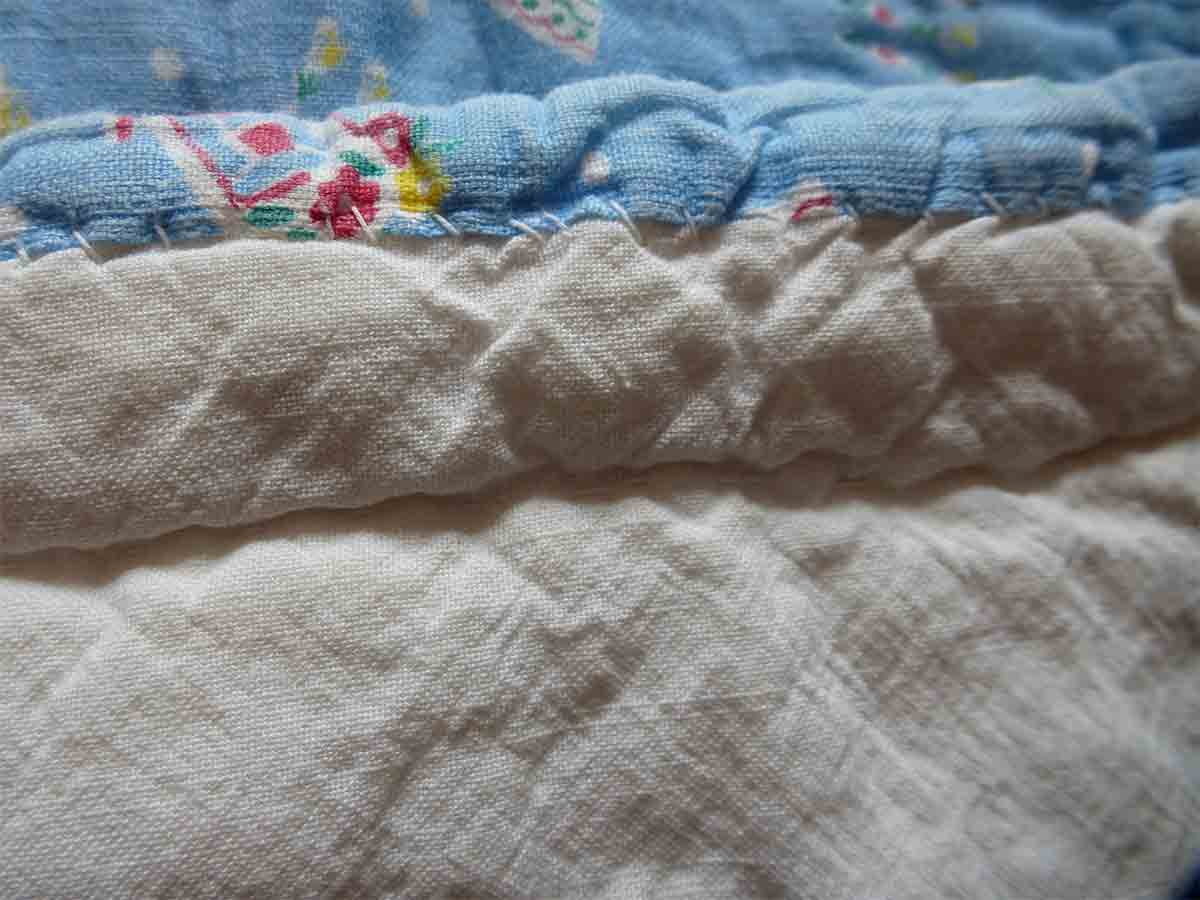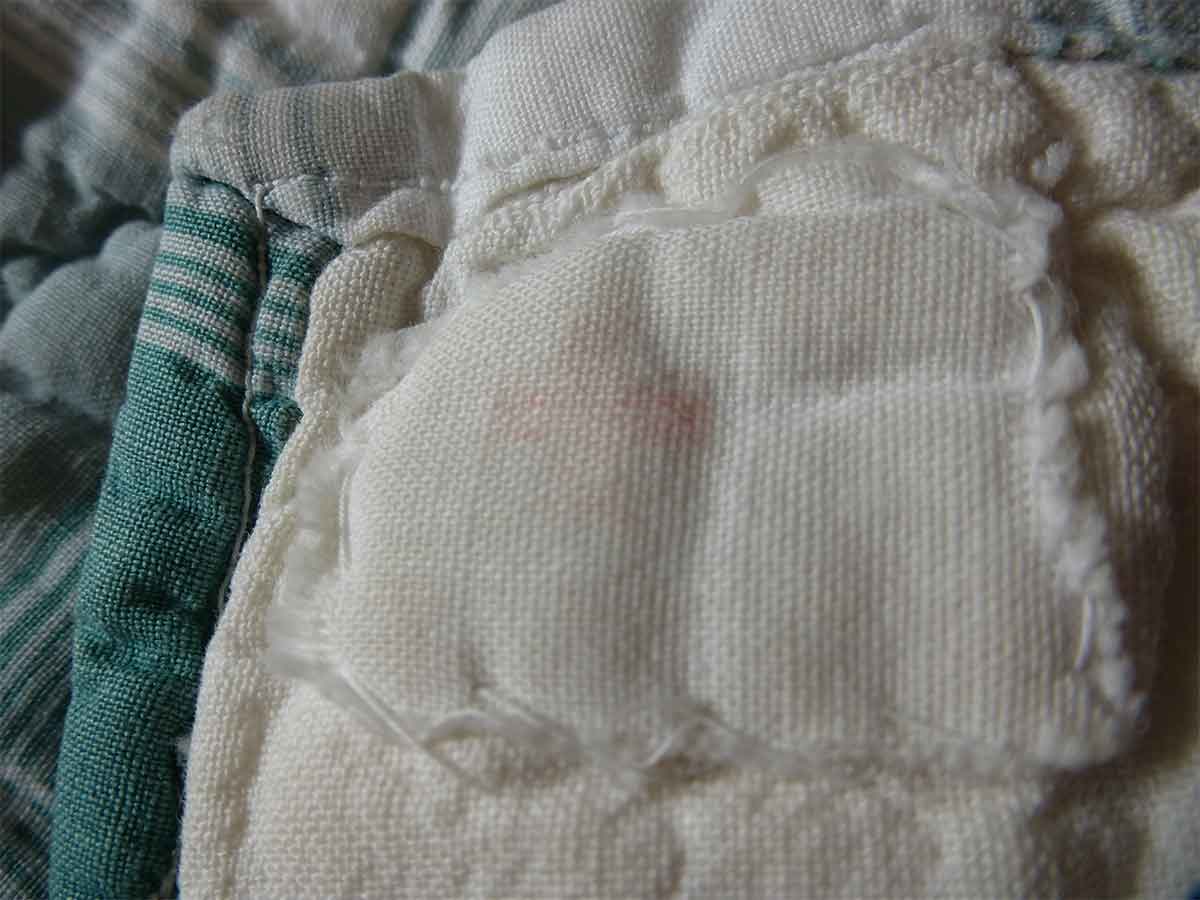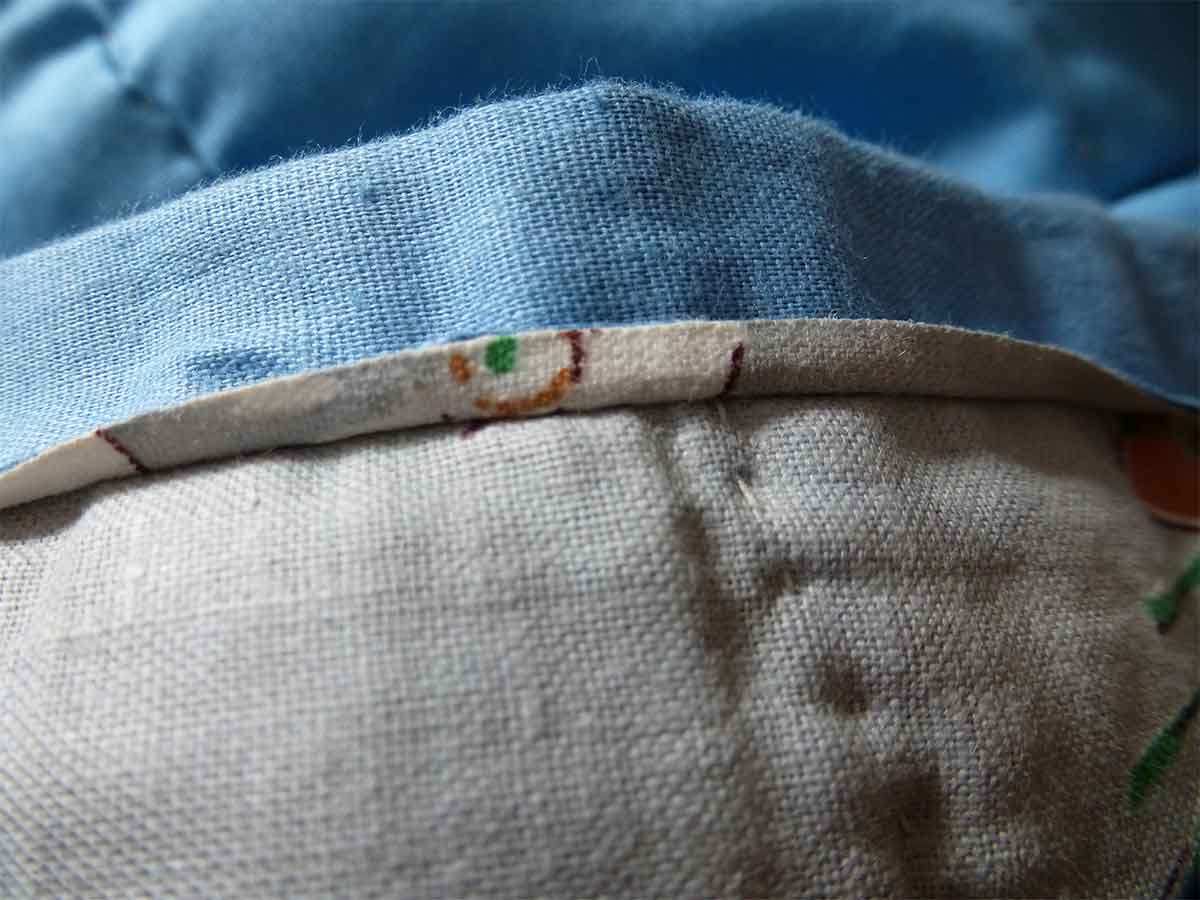Qualität ist wichtiger als Quantität – so lautete die Maxime in den Nähstuben des Kanadischen Roten Kreuzes in den 1940er-Jahren. In dieser Zeit nähten und strickten kanadische Frauen unzählige Kleidungsstücke. Verschickt wurden sie als Spenden auch in europäische Länder, wo die Not während des Zweiten Weltkriegs und in der Nachkriegszeit groß war. Die Hilfsorganisation hatte hohe Ansprüche. Die Herstellung bestimmter Hilfsgüter erfolgte deshalb nach standardisierten Vorlagen. Entsprach die Ware nicht den qualitativen Erwartungen, wurde sie nicht ausgeliefert. (https://www.redcross.ca/history/artifacts/wwii-civilian-knitting-instructions)
Quilts waren von dieser Standardisierung allerdings ausgenommen:
„Leading the way the Canadian Red Cross Society supplied many items made strictly to standardized patterns and samples in sewing rooms across the country.“ „Quilts were an exception to the standardization, as noted in a report by the Canadian National Women‘s Work Committee chairman Mrs. C. McEachran:“One outstanding exception where no samples were required should be noted, namely the patchwork quilts which were made by hundreds of Canadian women in their own houses…“ (Bridget Long, Quilt Aid in Britain’s Hour of Need ,QNM April 2005)
War es Patriotismus, waren es die familiären Verbindungen nach Europa, war es eine Ablenkung von der alltäglichen Routine – warum hatten so viele kanadische Frauen zuhause und in Werkstätten Quilts für Europa genäht? Eine schlüssige Antwort dazu liefert Joanna Dermenjian (https://sutureandselvedge.com/) die sich in Kanada mit der Geschichte der kanadischen Rot-Kreuz-Quilts beschäftigt. Sie lässt eine Zeitzeugin zu Wort kommen:
„For women to sustain this making for six years, and consistently send thousands of quilts, plus many other sewn articles of clothing and hospital needs, something must have motivated them. In my heart, I think they made them for the same reason that women have been making masks here in Canada (in Germany too). They want to do something, they feel anxious and helpless, but they look for a need and rally to meet the need. I also believe that women gathered because it ment a social need for them all. They may have been experiencing grief, sorrow, loneliness, loss, worry – and gathering with other women helped them. To make, to work with their hands, to socialize, to meet a need. I have been looking for clues to support my theory but I haven’t found anything in writing. I have only met one woman who made the quilts – Phyllis is 98 – and she said that they just liked to get together and do something at the church.“
Wie sieht es heute mit dem Quilten in Nordamerika aus?
Dazu noch einmal Joanna Dermenjian (2020):
„My friend Phyllis told me that her mother and grandmother quilted, so she was very familiar with it, but many women her age in the early 1940’s did not know how to quilt or even sew. So she taught them and that was very welcomed.
However, after the war, quilting fell out of favour as more women joined the work force and there was a sort of scorn for domestic work. Canada’s centennial celebrations in 1967 brought a renewed interest in the settling of our country and the early pioneers, and the home crafts they engaged in, and so there was a quilt revival at that time. Many quilts were brought out of trunks, and women became interested in making them again. Then the USA had their Bi-centennial celebrations in 1976 and this brought even more interest, and it really hasn’t gone away since, though it is mostly considered a ‘retirement’ craft. Most quilt makers are over 50 years old. The average age in my quilt guild is about 80. I am the youngest. Women typically join a quilt guild and make quilts for fundraising in their communities, for hospital gift stores (the sale of baby quilts raises money for hospital), ‘Touch’ quilts for Alzheimer patients, quilts for women victims of assault or violence, and so on. They are always looking for charities or causes that need quilts. However, not many young people are interested in making them, although there is a bit of a modern quilt movement right now that might change that in the US there is a big movement among black people, both men and women, to make amazing quilts about Black Culture and movements. See Bisa Butler and Sanford Biggar.“
Mehr Informationen zu den kanadischen und US-amerikanischen Quilts aus der Zeit des Zweiten Weltkriegs gibt es in meinem digitalen Vortrag
am Di., 10.11.2020, 19:30 – 21:00 Uhr
Die Geschichte der mennonitischen Quilts aus der Zeit des Zweiten Weltkriegs wird hier erzählt.

